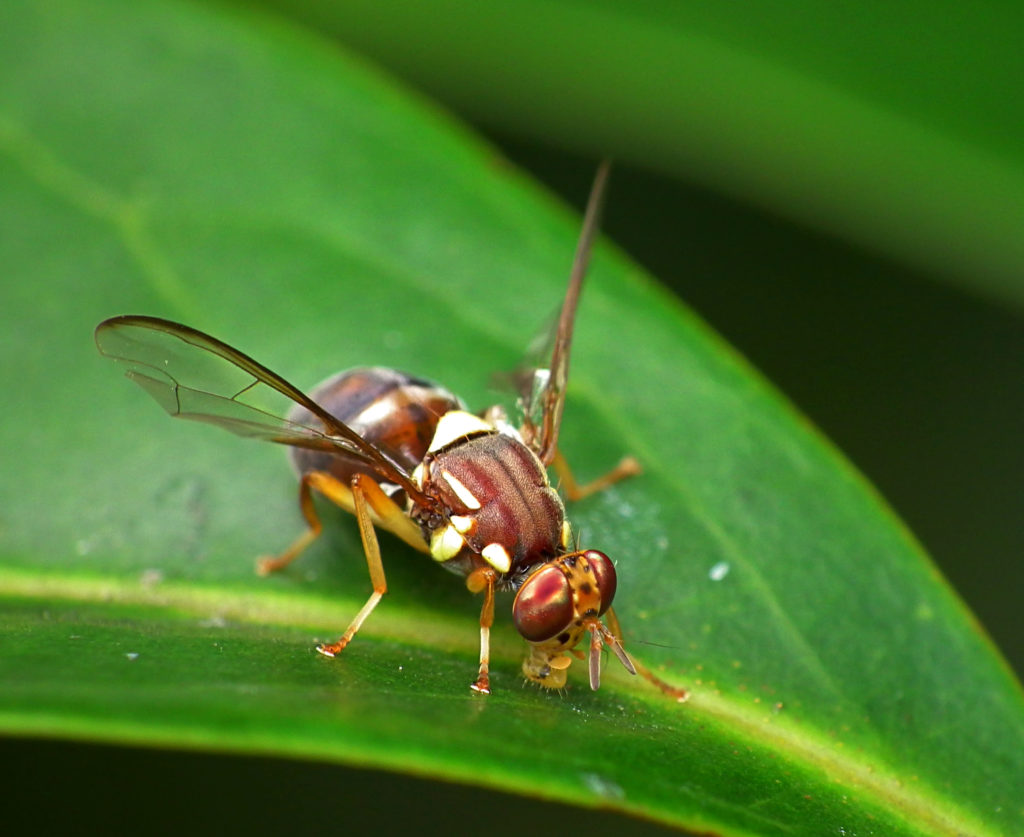Bactrocera spp.

Fruit flies in the family Tephritidae are among the worst insect pests of tropical and temperate horticulture around the world. Many species are recognised as pests of Australian horticulture, the major one being the Queensland fruit fly (Qfly), Bactrocera tryoni, whose seasonal incursions are a constant risk to our southern and western states. Exotic fruit fly species are also ongoing biosecurity threats, and major invasions of exotic fruit flies have occurred in recent decades. Chemical insecticides are used for pre- and post-harvest fruit fly disinfestation in many parts of the world but efficacy and residue issues are pushing the industry towards more biological controls. The two major techniques being used are the Sterile Insect Technique (SIT), which relies on the mass release of mass-reared sterilised males, and the Male Annihilation Technique (MAT) which relies on attracting males to lures laced with small amounts of chemical insecticide. Unfortunately the economics of SIT become problematic at the sorts of scales needed, and the MAT does not attract the females responsible for infesting the fruit with maggots. Moreover MAT and SIT have to be used sequentially, rather than simultaneously, because MAT also eliminates sterilised males and effective lures have not been developed for several key species.
CSIRO, Macquarie University and other agencies have been participating in the Horticulture Innovation Australia’s SITPlus consortium and IAEA’s Coordinated Research Project (Assessment of Simultaneous Application of SIT and MAT to Enhance Bactrocera Fruit Fly Management) to develop improvements on the SIT and MAT, and CSIRO’s Applied Genomics Initiative (AGI) has been working in parallel with these projects to provide underpinning genomic resources to address both the technical and population genetic challenges currently associated with SIT and MAT. Building on earlier chromosome level reference genome assemblies for B. tryoni and another close relative B. jarvisi, AGI has now developed chromosome level reference genome assemblies for two additional members (B. neohumeralis and B. aquilonis) of the tryoni species complex,three other species found in Australia (B. kraussi, B. pallida, B. frauenfeldi; scaffold level draft assemblies based on Illumina short reads and Oxford Nanopore long reads) and embarking on another exotic pest species from Southeast Asia (B. albistrigata) which is an ongoing invasion threat. Key foci for the work are the molecular bases for lure responsiveness, to improve MAT, and male sex pheromones and components of seminal fluid responsible for inhibiting remating by mated females, to enhance SIT.
CSIRO
Macquarie University
